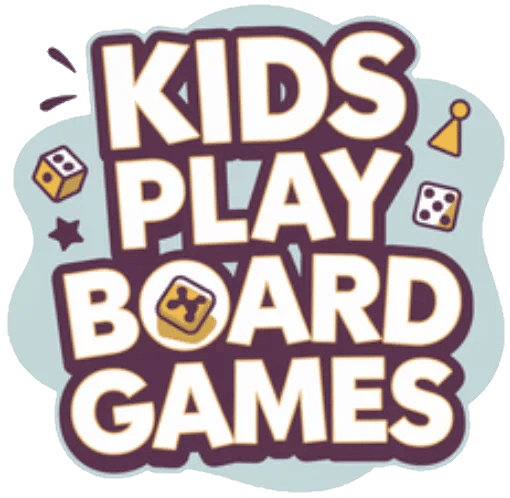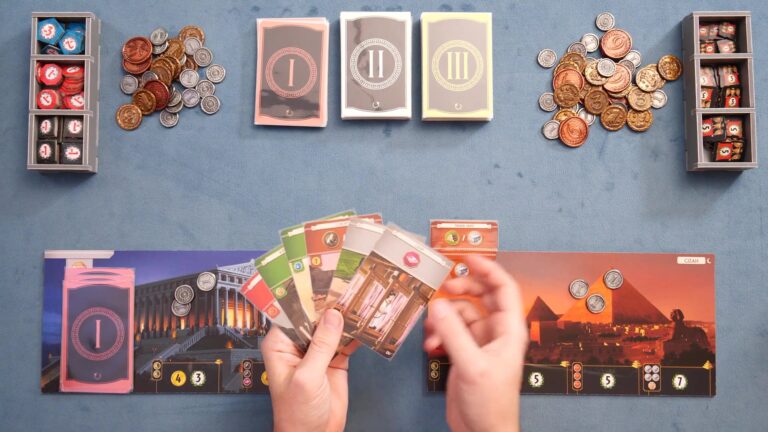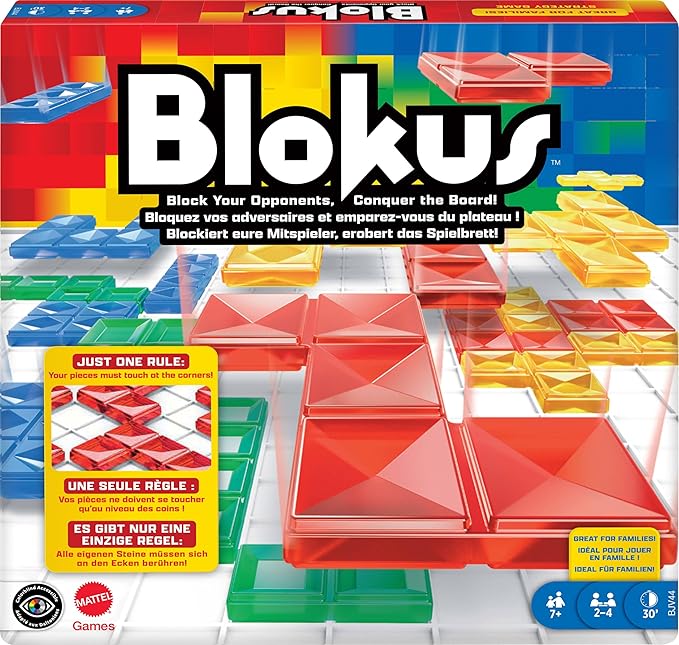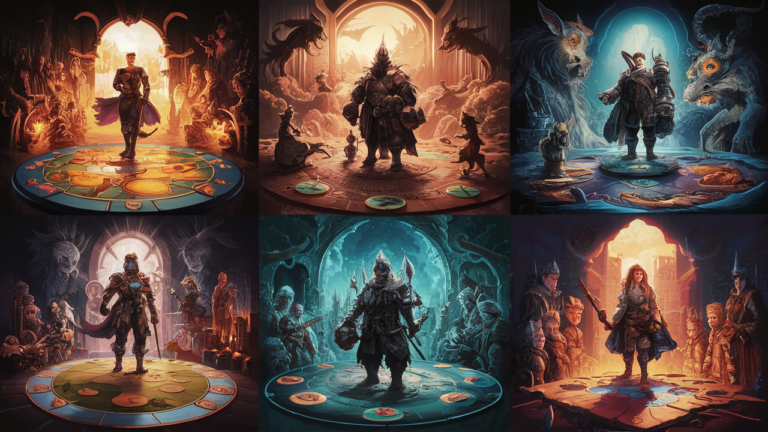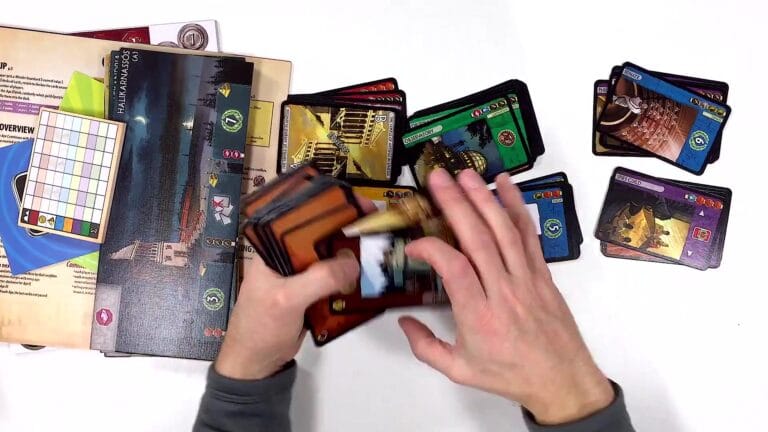The Settlers of Catan Review: Why It’s a Timeless Board Game Classic
Disclaimer : This post contains affiliate links. If you make a purchase through these links, I may earn a commission at no extra cost to you. I only recommend products or services I believe will provide value to my readers.
Introduction
In the world of board games, few titles have managed to capture the hearts and minds of players as effectively as “The Settlers of Catan.” Designed by Klaus Teuber and first released in 1995, Catan has become a staple in many gaming collections, praised for its unique blend of strategy, luck, and social interaction.
Catan has cultivated a vibrant community of fans who share strategies, custom scenarios, and game night stories. If you're looking to connect with other enthusiasts or discover fresh ideas, check out the Catan subreddit, where players from around the world discuss everything from expansions to house rules.
But what makes Catan so enduring, and is it still worth playing today? Let's dive into a comprehensive review to find out.
Aesthetics and Component Quality
The components of Catan are of high quality, featuring durable hexagonal tiles, wooden settlements, roads, and cities, along with robust resource cards. The artwork is visually appealing, with a clear and cohesive design that enhances the game's theme.
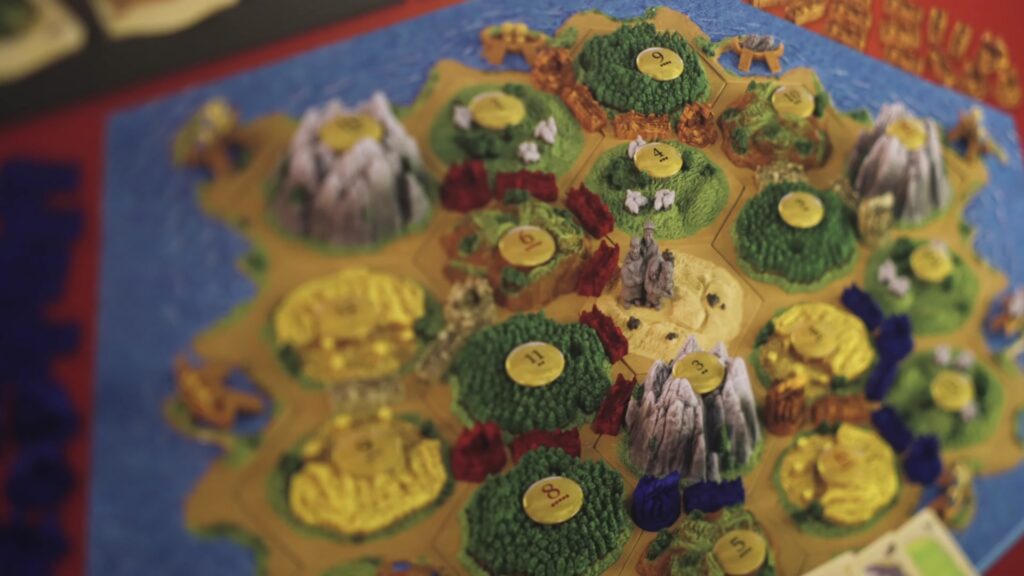
Theme and Immersion
Catan's theme of building a civilization on the island of Catan is well-integrated with its mechanics. Players take on the roles of settlers, competing to build settlements, roads, and cities while managing resources. This theme is engaging and immersive, especially with the modular board that changes with each play, ensuring a unique experience every time.
Gameplay and Mechanics
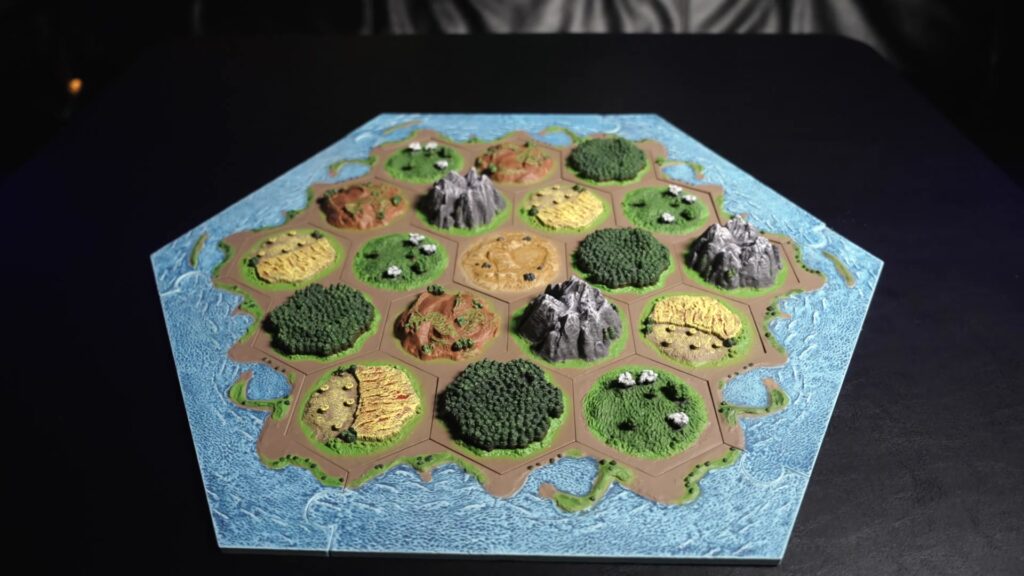
Resource Collection and Management
The game begins with each player placing two settlements and two roads on the board. Resources are collected based on the roll of two dice, with players gathering resources from the tiles where their settlements or cities are located. This mechanic introduces a balance of luck and strategy, as players must strategically place their settlements to maximize resource collection.
Trading and Negotiation
Trading is a crucial aspect of Catan, allowing players to negotiate with each other to exchange resources. This social interaction adds a layer of complexity and fun, as players must balance their needs with the willingness of others to trade. The game also includes development cards, which can provide additional resources, victory points, or special abilities.
Building and Expansion
Players use resources to build settlements, roads, and cities. Each settlement is worth one victory point, while cities are worth two. The game also features special achievements like the “Longest Road” and “Largest Army,” which can change hands throughout the game and provide additional victory points.
Balance
Catan's balance between luck and strategy is one of its strongest features. While the roll of the dice introduces randomness, strategic placement of settlements and cities, along with effective trading, can significantly influence the outcome. However, some critics argue that the game's simplicity can sometimes expose how little there is for players to do, particularly in terms of deep strategic decisions[1].
Social Interaction
The social dynamics in Catan are robust, with trading and negotiation being central to the game. Players must interact with each other to achieve their goals, which can lead to alliances, negotiations, and sometimes sabotage. This interaction makes the game highly engaging and ensures that all players remain involved until the end.
Elegance and Ease of Use
The rulebook of Catan is exemplary, making it easy for new players to learn the game. The setup, while initially complex, becomes straightforward after the first few plays. However, some players find that the game's simplicity, which was once a strength, now feels like a weakness compared to more complex modern games[1].
Replayability
One of Catan's greatest strengths is its replayability. The modular board and random placement of resource tiles ensure that no two games are the same. This variability, combined with the dynamic nature of resource collection and trading, makes Catan a game that can be played multiple times without feeling stale.
Personal Experience and Recommendations
Personally, I find Catan to be an incredibly engaging game that balances luck and strategy perfectly. However, some players may find it too simple or repetitive after multiple plays. I highly recommend Catan as a gateway game for those new to board gaming, as well as a staple for any serious board game collection.
How to Set Up and Play Catan Of Settlers
Setup Instructions
- Organize Components: Lay out terrain tiles (forest, field, hill, mountain, pasture) and arrange the frame border.
- Build the Board: Randomly place terrain tiles inside the frame, leaving space for the desert, then add numbered tokens to each tile.
- Set Starting Pieces: Each player places two settlements and two roads, ensuring no adjacent settlements. Collect resources based on the second settlement's position.
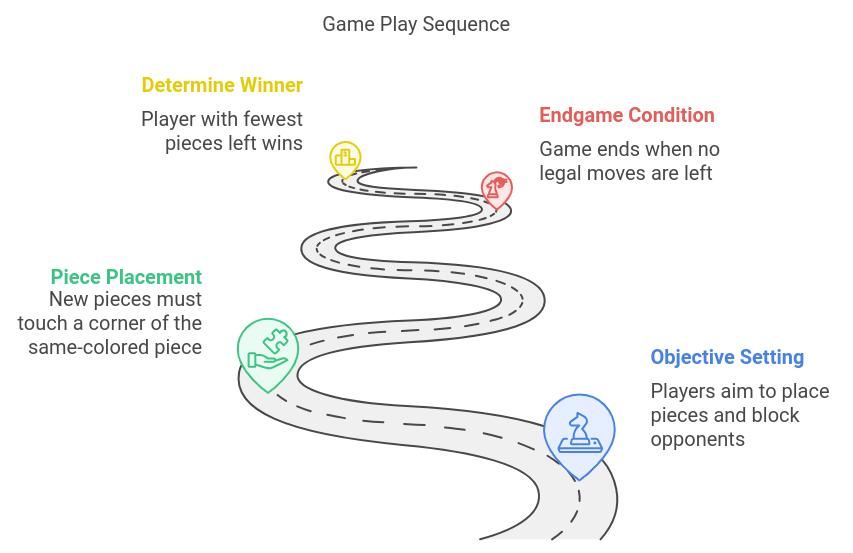
Gameplay Basics
- Goal: Be the first to score 10 victory points by building settlements, cities, and using development cards.
- Turn Actions: Roll dice to produce resources, trade with players or the bank, and build roads, settlements, or cities.
- Special Rules: Earn bonuses for the Longest Road and Largest Army, and use the robber strategically to block opponents.
Strategy Tips
- Build near high-probability numbers (e.g., 6 and 8).
- Diversify resource access to avoid shortages.
- Trade wisely to gain the materials you need while limiting opponents' progress.
Why Play Catan?
Catan is one of the best strategy board games for families, offering high replayability with its modular board, easy-to-learn rules, and interactive gameplay. It’s perfect for game nights, combining strategy, negotiation, and fun!
Pros and Cons of Catan Board Game : A Balanced Look
| Pros | Cons |
|---|---|
| Great balance of luck and strategy | Some players may find it too simple |
| Easy-to-learn rules with a well-designed rulebook | Gameplay can feel repetitive to some |
| Excellent player interaction through simple trading | Lengthy games may not suit all players |
| Modular board offers endless variety | Heavy reliance on dice can frustrate some |
| High replayability | Resource scarcity can slow the game |
Catan Vs Other Games : Comparison to Similar Games
Here is a comparison of Catan with other popular board games:
| Game | Number of Players | Playing Time | Complexity | Replayability |
|---|---|---|---|---|
| Catan | 3-4 | 60-90 minutes | Medium | High |
| Carcassonne | 2-5 | 30-45 minutes | Low-Medium | High |
| Ticket to Ride | 2-5 | 30-60 minutes | Medium | Medium |
| Pandemic: Hot Zone – North America | 2-4 | 30-60 minutes | Medium-High | Medium |
Conclusion
In conclusion, The Settlers of Catan is a game that has stood the test of time, despite some criticisms about its simplicity. Its combination of luck, strategy, and social interaction makes it a game that appeals to a wide range of players. While it may not be as complex as some modern board games, its high-quality components, excellent rulebook, and endless replayability ensure that Catan remains a favorite among both casual and experienced gamers.
By understanding both the strengths and weaknesses of Catan, you can make an informed decision about whether this classic game is right for you.
FAQs About Catan: Answering Common Questions
Is Catan suitable for kids and families?
Yes, Catan is a great family board game, particularly for kids aged 10 and up. Its simple rules and engaging strategy make it ideal for family game nights.
How many expansions does Catan have, and are they worth it?
Catan has several expansions, including Seafarers, Cities & Knights, and Traders & Barbarians. Each adds unique mechanics and variety, enhancing replayability for seasoned players.
Can you play Catan with two players?
While Catan is designed for 3–4 players, there are house rules and unofficial two-player variants that adapt the game for fewer participants.
What’s the difference between Catan and Catan Junior?
Catan Junior simplifies the mechanics of the original game, making it accessible to younger players aged 6–9, with pirate-themed gameplay.
How long does it take to learn and play Catan?
The rules take about 15–20 minutes to learn for new players. A typical game lasts 60–90 minutes, depending on the number of players and their experience level.
What are the best strategies to win Catan?
Focus on high-probability tiles (6s and 8s), diversify resources, and actively trade with other players. Prioritizing the Longest Road or Largest Army can also secure critical victory points.
Is Catan worth buying in 2025?
Absolutely! Despite its age, Catan remains one of the best gateway strategy games for families and friends. Its modular board ensures fresh gameplay every time.
